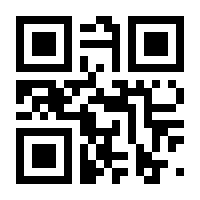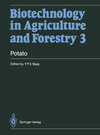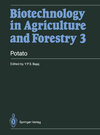
×
![Buchcover ISBN 9783540179665]()
Potato
von Y. P. S. BajajInhaltsverzeichnis
- Section I Micropropagation, Virus-Free Plants, Haploid Production and Field Trials.
- I.1 Biotechnology and 21st Century Potato.
- 1. General Account.
- 2. Traditional Methods of Potato Breeding.
- 3. Biotechnology Produces Novel Potatoes.
- 4. The Future Potato.
- References.
- I.2 In Vitro Propagation of Potato - Progress in Czechoslovakia.
- 1. Introduction.
- 2. Meristem Tip Culture.
- 3. In Vitro Clonal Propagation.
- I.3 Virus-Free Potatoes Through Meristem Culture.
- 2. Virus Elimination.
- 3. Indexing Source Plants.
- 4. Heat Therapy.
- 5. Culture Medium.
- 6. Meristem Culture.
- 7. Indexing Treated Plantlets.
- 8. Elimination of PSTV.
- 9. Indexing Field Plants.
- 10. Summary.
- I.4 In Vitro Induction of Virus-Free Potatoes by Chemotherapy.
- 2. Meristem and Explant Culture of Potato in the Presence of Virazole.
- 3. Discussion.
- I.5 In Vitro Improvement of Potatoes: The New Zealand Approach.
- 2. Biotechnological Approaches.
- 3. Future Prospects of Biotechnology in Potatoes in New Zealand.
- I.6 In Vitro Production and Release of Potato Varieties in China.
- 2. Meristem-Tip Culture.
- 3. Cold Storage of Shoot Tips and Plantlets.
- 4. Large-Scale Propagation and Growing of the Virus-Free Plantlets.
- 5. Varieties Released.
- 6. Comparison of Growth and Production of Healthy and Infected Plants.
- 7. Conclusions and Prospects.
- I.7 Field Performance of Micropropagated Potato Plants.
- 2. Growth and Production of Micropropagated Potatoes as Compared to Tuber-Generated Potatoes.
- 3. Timing and Handling of Micropropagules.
- 4. Conclusions.
- I.8 Anther Culture and Haploid Production in Potato.
- 2. Factors Influencing Anther Culture.
- 3. Pollen Culture.
- 4. Development of Pollen Grains to Plants.
- 5. Utilization of Anther Culture Technique and Haploids.
- Section II Physiological, Biochemical and Nutritional Studies, and Molecular Genetics.
- II. 1 Potato Tuber Storage: Biochemical and Physiological Changes.
- 2. Relations Between Storage and Plant Hormones.
- 3. Changes in Various Constituents During Storage.
- 4. Changes in Metabolic Activities with Storage.
- II.2 Biotechnology of Nutritional Improvement of Potato.
- 1. Potato as a Food.
- 2. Potato as a Source of Energy.
- 3. Composition of Potato.
- 4. Nutritional Considerations on Improvement.
- 5. Conventional Methods of Improvement of Proteins and Amino Acids.
- 6. Biotechnological Approaches to Nutritional Improvement.
- II.3 Molecular Genetics of Potato.
- 2. Nuclear Genetics.
- 3. Organelle Genetics.
- 4. DNA-Mediated Genetic Transformation in S. tuberosum.
- 5. Molecular Genetics of Somaclonal Variation.
- 6. Conclusions and Prospects.
- Section III Protoplast Isolation, Culture and Somatic Hybridization.
- III.1 Viability, DNA Synthesis and Cell Wall Regeneration on Potato Protoplasts.
- 2. Methodology.
- 3. Results and Discussion.
- 4. Conclusion.
- III.2 Improved Culture Techniques for Potato Protoplasts.
- 2. Source of Plant Material.
- 3. Protoplast Isolation and Purification.
- 4. Protoplast Culture.
- 5. Conclusion.
- III.3 Regeneration of Plants from Potato Protoplasts.
- 2. Pre-Growth of the Cells or Plant.
- 3. Production of Protoplasts.
- 4. Collection and Washing of Protoplasts.
- 5. Culture of Protoplasts and Calli.
- 6. Nature of the Protoclones Produced.
- III.4 Electrofusion and Analysis of Potato Somatic Hybrids.
- 2. Protoplast Preparations.
- 3. Electrofusion of Potato Protoplasts.
- 4. Characterization of Variants and Fusion Products.
- III.5 Markers for Identifying Somatic Hybrids in Potato.
- 2. Biochemical Markers.
- 3. Transient Differences Between Hybrids and Their Parents...
- 4. Gross Phenotypic Differences.
- 5. Selectable Genetic Markers.
- 6. Conclusion.
- Section IV Somaclonal Variation, Selection of Mutants and Resistant Plants.
- IV. 1 Effect of the Origin of Explant on Callus Initiation and Differentiation in Potato.
- 2. Materials and Methods.
- 3. Study of the Aptitudes for Callogenesis and Organogenesis of Various Primary Explants.
- 4. Composition of the Callus After Fragmentation and Successive Subculturing.
- 5. Histogenesis.
- 6. Conclusions.
- IV2 In Vitro Induction of Cold Acclimation in Potato.
- 2. Potato Cold Acclimation.
- 3. The Establishment of Tissue Cultures.
- 4. In Vitro Cold Acclimation.
- 5. Hormonal Effects on Cold Acclimation.
- 6. Plasma Membrane Alterations.
- 7. Conclusion.
- IV3 Potato Improvement Through In Vitro Selection for Increased Levels of Free Amino Acids.
- 2. Selection Methods.
- 3. Potato Tissue Culture Selection.
- 4. Other Tissue Culture Selections.
- IV.4 Biotechnologies of Obtaining Herbicide Tolerance in Potato.
- 1. The Problem and Possible Solutions.
- 2. Biotechnological Selection Systems.
- 3. Results with Potatoes.
- 4. The Future Outlook and Challenges.
- IV.5 In Vitro Production of Potatoes Bearing Resistance to Fungal Diseases.
- 1. Historic Selection of Potato.
- 2. Potato Breeding and Disease Resistance.
- 3. Somatic Approach.
- 4. Isolation of Phytotoxin.
- 5. Resistance Screening of Regenerates.
- 6. Regeneration After in Vitro Selection.
- 7. Conclusions.
- IV.6 Selection of Variants by Dual Culture of Potato and Phytophthora infestans.
- 2. Regeneration of Potato Variants.
- 3. Dual Culture of Potato and Fungus.
- 4. Greenhouse Observations of Variants.
- 5. Conclusions and Prospects.
- IV.7 Testing Somaclonal Variants of Potato for Resistance to Virus Disease.
- 2. Examples of Specific Disease Resistance Studies with Potato.
- 3. Previous Work on Resistance to Potato Viruses.
- 4. Nature of Resistance to Disease in Somaclones.
- 5. Protoplasts Isolation from Potato Leaf Mesophyll.
- 6. Other Virus/Viroid Diseases.
- 7. Methods for Future Work.
- IV.8 Breeding for Virus and Nematode Resistance in Potato Through Microspore Culture.
- 3. Results.
- 4. Discussion.
- IV.9 Genetic Diversity in Protoplast- and Cell-Derived Plants of Potato.
- 2. Karyological Observations.
- 3. Phenotypic Changes in Protoplast- and Cell-Derived Plants.
- 4. Conclusions and Prospects.
- IV. 10 Variation in Tubers in Single Cell-Derived Clones of Potato in Ireland.
- 2. Single Cell Culture.
- 3. Somaclonal Variation in Regenerates from Single Cell Culture.
- IV. 11 Genetic Variability in Tuber Disc-Derived Potato Plants.
- 2. Tuber Disc Regeneration Procedure.
- 3. Origins of Variability.
- 4. Variability from Adventitious Regeneration.
- 5. Statistical Approach to Evaluation of Quantitative Variation.
- 6. Exemplary Analysis of Tuber Elongation Ratio Results.
- IV. 12 In Vitro Induction of Mutation in Potato.
- 2. In Vivo Mutation Breeding.
- 3. In Vitro Culture and Mutation Breeding.
- 4. The Somaclonal Variation.
- 5. Discussion and Perspectives.
- Section V Conservation and Exchange of Germplasm.
- V.1 Preservation of Potato Pollen.
- V.2 In Vitro Conservation of Potato Germplasm in Hungary.
- 2. Culture Initiation.
- 3. Elimination of Viruses, Bacteria and Fungi.
- 4. Maintenance of Cultures.
- 5. Maintenance of Viruses in Culture.
- 6. Long-Term Storage.
- 7. Genetic Stability.
- 8. Exchange and Transfer.
- 9. Vegetative Propagation.
- 10. In Vitro Tuberization.
- 11. Planting.
- 12. Development of Plants in the Field.
- 13. Conclusions.
- V.3 Tissue Culture for the International Exchange of Potato and Cassava Germplasm.
- 2. Establishment of Gene Banks.
- 3. Tissue Culture Methods.
- 4. Distribution of Germplasm.
- 5. Conclusions.
- V.4 Freeze Preservation of Suspension Cultures of Potato.
- 2. Preparation of Cell Suspension Culture.
- 3. Freeze Preservation.
- V.5 Cryopreservation of Potato Germplasm.
- 2. Cryopreservation of Excised Meristems.
- 3. Cryopreservation of Root Tips.
- 4. Cryopreservation of Cell Suspensions and Somaclones.
- 5. Cryopreservation of Pollen.
- 6. Viability and Stability During Storage.
- 7. Clonal Repositories and the International Exchange of Germplasm.
- 8. Conclusions and Prospects.
- V.6 Fluid Drilling of Embryos in Potato Improvement - A Future Possibility.
- 1. Problems of Potato ‘Seed’ Production.
- 2. Alternative Planting Systems.
- 3. Somatic Embryogenesis in Herbaceous Crops.
- 4. Delivery Systems for Somatic Embryos.
- 5. Recent Developments in Potato Tissue Culture.
- 6. Future of Fluid Drilling of Potato Somatic Embryos.




